Ms. Bujold is best known for her oddly dashing feudalistic prince Miles Vorkosigan. Though Bujold has written many stories about this fiefdom planet and it’s oddly egalitarian prince, perhaps her best known signature technology is the uterine replicator. The replicator is mentioned as a plot device from the very beginning and its use and development follow a logical path. Its first use is to prevent the death of a fetus in distress. As with actual technology the replicator eventually becomes the preferred method of “bearing children” as they are better cared for, have more complete health monitoring, and gender and traits can be more easily controlled.
Though the technology itself is not often mentioned its impact on her human universe is huge with some planets using it for specific purposes.
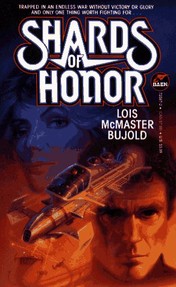 Ethan of Athos: is the story of a planet founded on religious principals. The premise is that monks adhering to an unnamed religious order found the planet with the intention of excluding all women due to the temptation that gender poses. The uterine replicator is used to maintain planetary population.
Ethan of Athos: is the story of a planet founded on religious principals. The premise is that monks adhering to an unnamed religious order found the planet with the intention of excluding all women due to the temptation that gender poses. The uterine replicator is used to maintain planetary population.
Ceteganda: is the story of a planet populated by both genders, but reproduction is strictly controlled by the ruling council (called the Star Crèche) which is conducting a clandestine genetic experiment extending to its entire population. This program is widely known to the population, but unknown to other human worlds.
Prior Art: though the artificial womb has been suggested as far back as “Brave New World,” Bujold actually gave its development a logical progression and made it a vital device for some plot points in selected stories. She also provided a far more detailed description of the device, even suggesting how blood, amniotic fluid, and other vital components would function.
Situational Reality
Ectogenesis (outer growth) is not yet possible, but as an idea has its devoted followers. The problems are reproducing the function of the placenta, passing the proper nutrients to the fetus, creating viable amniotic fluid, and ridding the device of waste. Because this device would represent experimentation on humans, an ethical no-no, plans for such a device are rarely seriously discussed.
Real World Research
In fleshing out the idea Bujold interviewed a number of doctors about the idea. Two responses that struck her as interesting were from a married male doctor who thought it was a marvelous idea and a single male doctor who was firmly against it.


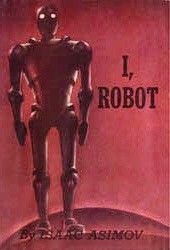 Runaround: In his second robot story there are problems with the devices. They are being used, off planet, to help restart a mining operation on Mercury. Powell and Donovan, two engineering specialists, send Speedy (an SPD-13 model) to a selenium pool so the two humans can repair their solar array. Speedy does not return in the appropriate amount of time and by sending a more primitive robot they find him circling the selenium pool. They determine that Speedy is caught up trying to obey human orders (law 2) while avoiding harm to itself (law 3) and has gotten itself in a feedback loop. Something in the pool could destroy Speedy, but it still attempts to follow its orders. The humans are unable to recall the robot due to its single-minded attempt to resolve conflicting orders. The problem is eventually resolved by forcing the robot to obey the first law when Powell goes to the pool, putting himself in danger, and forcing Speedy to rescue him.
Runaround: In his second robot story there are problems with the devices. They are being used, off planet, to help restart a mining operation on Mercury. Powell and Donovan, two engineering specialists, send Speedy (an SPD-13 model) to a selenium pool so the two humans can repair their solar array. Speedy does not return in the appropriate amount of time and by sending a more primitive robot they find him circling the selenium pool. They determine that Speedy is caught up trying to obey human orders (law 2) while avoiding harm to itself (law 3) and has gotten itself in a feedback loop. Something in the pool could destroy Speedy, but it still attempts to follow its orders. The humans are unable to recall the robot due to its single-minded attempt to resolve conflicting orders. The problem is eventually resolved by forcing the robot to obey the first law when Powell goes to the pool, putting himself in danger, and forcing Speedy to rescue him.


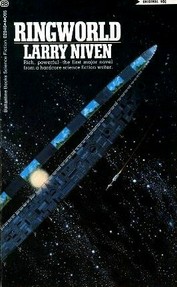 Niven did a fair amount of research to make the ringworld scientifically likely if not possible. There were some errors though and MIT students pointed them out. The most glaring that without some constant force keeping the ring in place it would “crash” into its sun. Niven wrote a sequel called “The Ringworld Engineers” in part to correct this problem in prose.
Niven did a fair amount of research to make the ringworld scientifically likely if not possible. There were some errors though and MIT students pointed them out. The most glaring that without some constant force keeping the ring in place it would “crash” into its sun. Niven wrote a sequel called “The Ringworld Engineers” in part to correct this problem in prose.


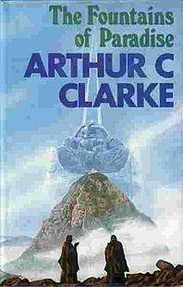 Clarke’s story is about one lone engineer who, throughout his life, proposes the creation of a space elevator. One end of the elevator is on earth and the other is in geosynchronous orbit around earth. Such a structure could get people and material into and out of orbit far cheaper than a rocket and this is discussed in the work.
Clarke’s story is about one lone engineer who, throughout his life, proposes the creation of a space elevator. One end of the elevator is on earth and the other is in geosynchronous orbit around earth. Such a structure could get people and material into and out of orbit far cheaper than a rocket and this is discussed in the work.


 Ethan of Athos: is the story of a planet founded on religious principals. The premise is that monks adhering to an unnamed religious order found the planet with the intention of excluding all women due to the temptation that gender poses. The uterine replicator is used to maintain planetary population.
Ethan of Athos: is the story of a planet founded on religious principals. The premise is that monks adhering to an unnamed religious order found the planet with the intention of excluding all women due to the temptation that gender poses. The uterine replicator is used to maintain planetary population.


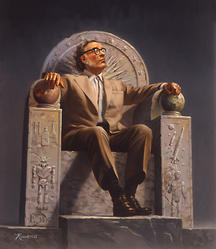

 Crêpes and Crêpe Disheson 09/14/2016
Crêpes and Crêpe Disheson 09/14/2016
 About Me - Liam Beanon 11/28/2014
About Me - Liam Beanon 11/28/2014
 About Ebolaon 11/08/2014
About Ebolaon 11/08/2014

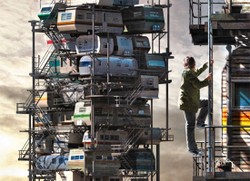
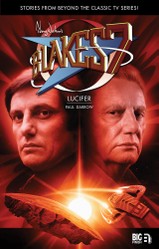
Comments